
Knockout
Knit Hats and Hoods

Published by Stackpole Books An imprint of The Rowman and Littlefield Publishing Group, Inc. 4501 Forbes Blvd., Ste. 200, Lanham, MD 20706 www.rowman.com Distributed by NATIONAL BOOK NETWORK 800-462-6420 Copyright 2019 Diane Serviss Model photography by Gale Zucker Technique photography by Diane Serviss All rights reserved. No part of this book may be reproduced in any form or by any electronic or mechanical means, including information storage and retrieval systems, without written permission from the publisher, except by a reviewer who may quote passages in a review. The contents of this book are for personal use only. Patterns contained herein may be reproduced in limited quantities for such use.
Any large-scale commercial reproduction is prohibited without the written consent of the publisher. We have made every eort to ensure the accuracy and completeness of these instructions. We cannot, however, be responsible for human error, typographical mistakes, or variations in individual work. British Library Cataloguing in Publication Information available Library of Congress Cataloging-in-Publication Data Names: Serviss, Diane, author. Title: Knockout knit hats and hoods : 30 Engaging Designs for Beanies, Tams, Slouches, and More / Diane Serviss. | Guilford, Connecticut : Stackpole Books, [2018] | Includes index. | Guilford, Connecticut : Stackpole Books, [2018] | Includes index.
Identifiers: LCCN 2018025415 (print) | LCCN 2018026521 (ebook) | ISBN 9780811768146 (ebook) | ISBN 9780811717663 (pbk. : alk. paper) | ISBN 9780811768146 (e-book) Subjects: LCSH: KnittingPatterns. | Hats. Classification: LCC TT825 (ebook) | LCC TT825 .S463 2018 (print) | DDC 746.43/2dc23 LC record available at https://lccn.loc.gov/2018025415  The paper used in this publication meets the minimum requirements of American National Standard for Information SciencesPermanence of Paper for Printed Library Materials, ANSI/NISO Z39.48-1992. First Edition Printed in the United States of America
The paper used in this publication meets the minimum requirements of American National Standard for Information SciencesPermanence of Paper for Printed Library Materials, ANSI/NISO Z39.48-1992. First Edition Printed in the United States of America 
Introduction
I believe with all my heart that knitters are not just craftspeople, we are artists; our hands careworn by the miles of yarn that travel through them.
We lay the groundwork and labor on it stitch by stitch until simple, raw, and wholesome materials are transformed into cozy masterpieces. We paint landscapes, sculpt childhood memories, illustrate exotic localesall from the comfort of our favorite chair. The very best part of knitting is that we can share the products of this art and even the skills of creating this art with each other. Like any artist, my work reflects my own experiences, the places I have been and the people I am privileged to know. I have found inspiration in the quaint Vermont country setting where I grew up, the welcoming sandy beaches of Florida where I now reside, and all the mountains and milestones between. 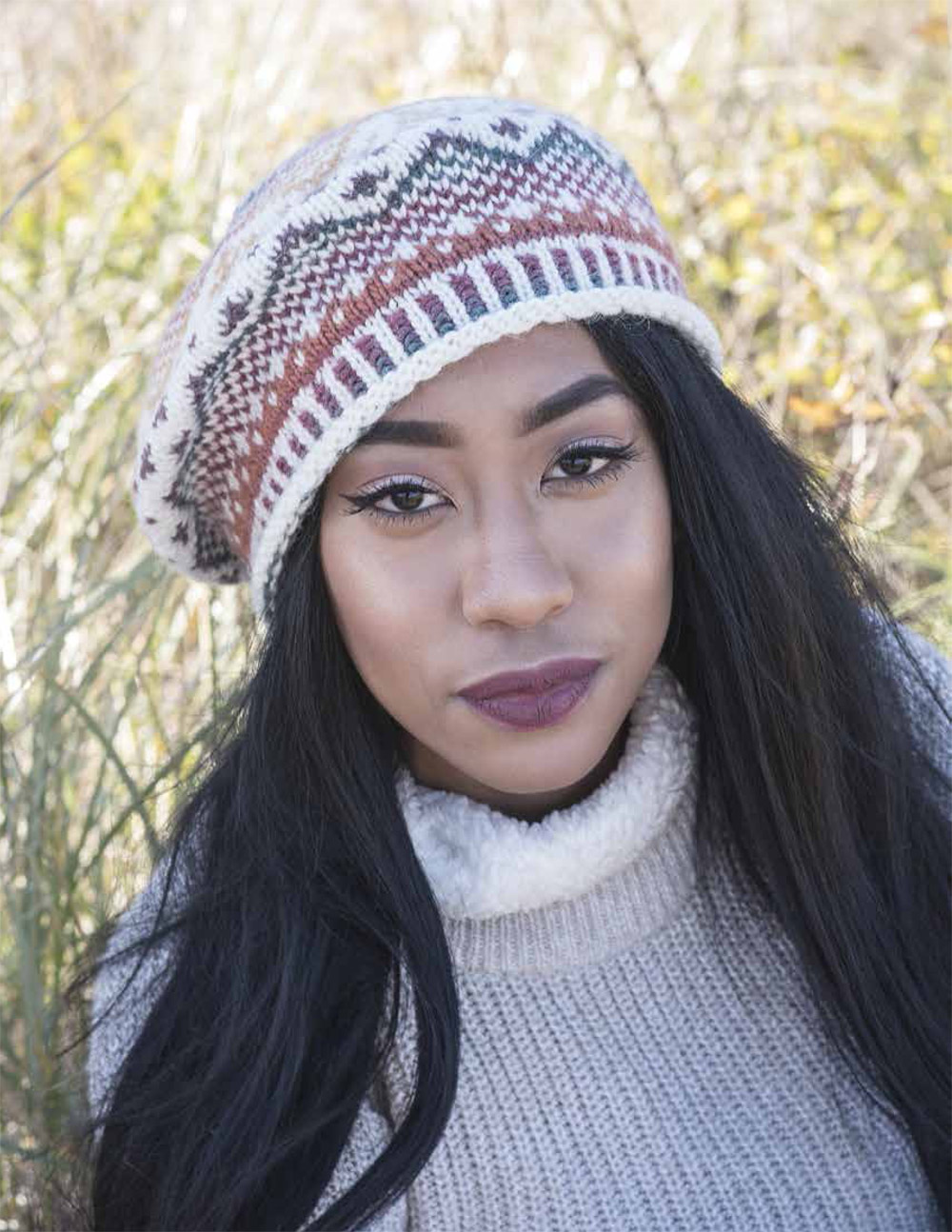
How to Use This Book
How to Read a Pattern When deciding on a pattern, it is best to read all the instructions first, from beginning to end.

How to Use This Book
How to Read a Pattern When deciding on a pattern, it is best to read all the instructions first, from beginning to end.
Be sure it is suitable for your needs and offers the size youll require or an explanation of how to alter it. Note the yarn and other supplies called for. Take into consideration the stitches and techniques employed in the pattern, and your level of comfort with them. That being said, do not limit yourself. Acquiring a new skill is often just a short lesson away. Tutorials such as those offered in this book are incredibly useful, and there is also a bounty of information to be found on the Internet.
Some patterns in this book include charts and color grids. As all of these patterns are written to be knit in the round, the charts should be read from right to left, bottom to top, as you will always be working on the right side of the fabric. It is assumed that the pattern will be repeated to complete each round. Pattern stitch charts will include a chart key where each symbol represents a specific type of stitch. Sizing Each pattern begins with an indication of what size head the finished garment should fit, as well as the measurements of the finished piece lying flat and unstretched. Some patterns include instructions for more than one size.
Where multiple sizes are not available, I recommend going up or down a needle size to accommodate a dierent circumference. Gauge Gauge refers to the number of stitches and rows per inch in a particular pattern stitch while using a specific sized knitting needle and yarn. It is always best to knit your own swatch using the same combination of needle and yarn or a similar yarn substitution as referenced in the pattern. Use a tape measure or gauge tool to compare your stitch and row count to those suggested in the pattern. If the same gauge is not met, increase or decrease the size of the needle to counteract those dierences. Also, be aware that you might not hit gauge spot-on, as everyone knits with a dierent tension, both across and vertically.
Whats most important for fit is that the number of stitches per inch matches the gauge. If youve hit the stitch gauge but your gauge on rows is offeither more rows per inch or less rows per inch than what is called foryou can fix that by adding or subtracting rows when knitting the body of the hat. Needles and Tools Knitting needles come in various sizes and materials, as well as three types: straight, double-pointed, and circular. I most often design in the round using circular needles, and therefore I rarely use straight needles; even when knitting a flat piece, I tend to still knit on circulars, without joining. Each pattern will indicate the type and size needed, but the material they are made of is your choice. Circular knitting is a way of knitting a tube that has no seams.
When casting on your stitches, be careful not to twist the stitches on your foundation row before joining the stitches and always place a marker between the first and last stitches to mark the end of each round. As youre decreasing, switch to double-pointed needles before the knitting becomes too tight on the circular needle. 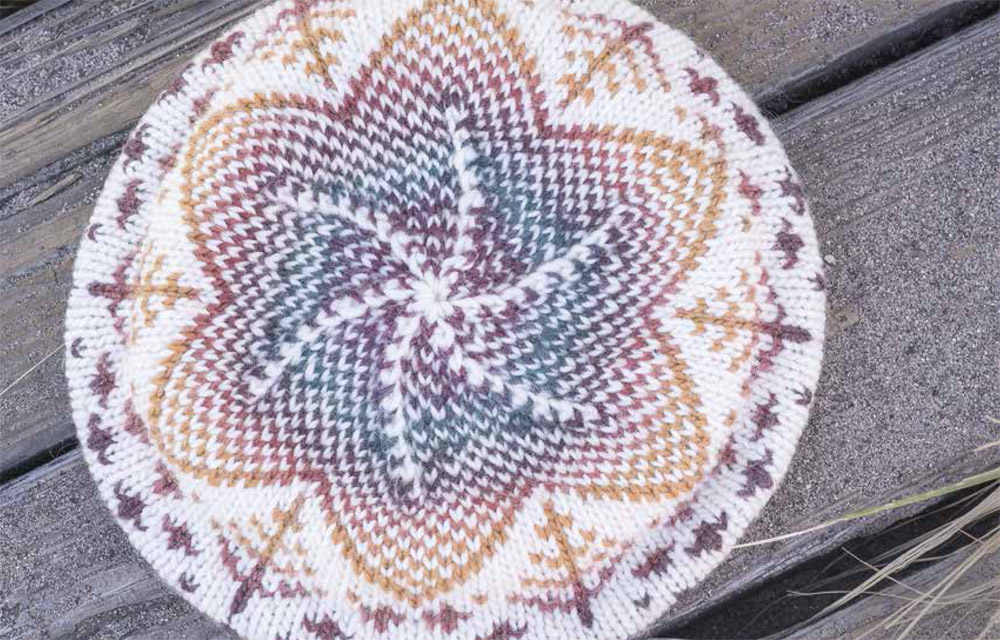 Other basic tools you will need include stitch markers, scissors, a yarn needle, a cable needle, and a ruler or gauge tool. Yarn and Yarn Substitution Patterns not only require a certain weight of yarn, but many patterns are only successful if the right texture and color are used, as well. Dark yarns, for example, can mask cable details. Some yarns are highly textured, have a fuzzy halo, or have a strong variegated-color pattern and are not appropriate for patterns with a raised-stitch detail.
Other basic tools you will need include stitch markers, scissors, a yarn needle, a cable needle, and a ruler or gauge tool. Yarn and Yarn Substitution Patterns not only require a certain weight of yarn, but many patterns are only successful if the right texture and color are used, as well. Dark yarns, for example, can mask cable details. Some yarns are highly textured, have a fuzzy halo, or have a strong variegated-color pattern and are not appropriate for patterns with a raised-stitch detail.
A smooth single-ply or multi-ply yarn that is not prone to splitting often works best for patterns that require sharp stitch definition. Often your designer has already done the legwork for you, choosing a type of yarn that is the right fit for the pattern. If a yarn substitution is needed or desired, be certain to choose something that does not stray too far from the original. All of the information you will need is located on the yarn label. A checklist of things to be mindful of includes: Yarn weight: The thickness of the yarn is referred to as yarn weight. There are seven yarn weights (as designated by the Craft Yarn Council)the higher the number, the heavier the yarn.
Next page

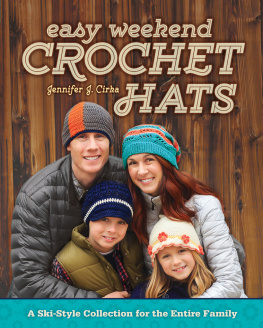

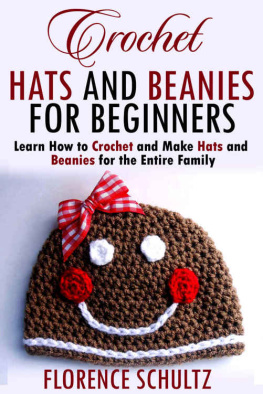
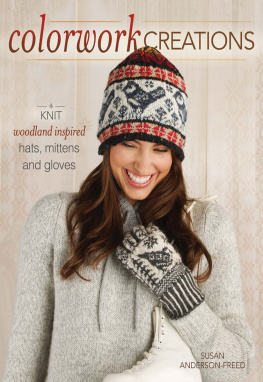

 Published by Stackpole Books An imprint of The Rowman and Littlefield Publishing Group, Inc. 4501 Forbes Blvd., Ste. 200, Lanham, MD 20706 www.rowman.com Distributed by NATIONAL BOOK NETWORK 800-462-6420 Copyright 2019 Diane Serviss Model photography by Gale Zucker Technique photography by Diane Serviss All rights reserved. No part of this book may be reproduced in any form or by any electronic or mechanical means, including information storage and retrieval systems, without written permission from the publisher, except by a reviewer who may quote passages in a review. The contents of this book are for personal use only. Patterns contained herein may be reproduced in limited quantities for such use.
Published by Stackpole Books An imprint of The Rowman and Littlefield Publishing Group, Inc. 4501 Forbes Blvd., Ste. 200, Lanham, MD 20706 www.rowman.com Distributed by NATIONAL BOOK NETWORK 800-462-6420 Copyright 2019 Diane Serviss Model photography by Gale Zucker Technique photography by Diane Serviss All rights reserved. No part of this book may be reproduced in any form or by any electronic or mechanical means, including information storage and retrieval systems, without written permission from the publisher, except by a reviewer who may quote passages in a review. The contents of this book are for personal use only. Patterns contained herein may be reproduced in limited quantities for such use.  The paper used in this publication meets the minimum requirements of American National Standard for Information SciencesPermanence of Paper for Printed Library Materials, ANSI/NISO Z39.48-1992. First Edition Printed in the United States of America
The paper used in this publication meets the minimum requirements of American National Standard for Information SciencesPermanence of Paper for Printed Library Materials, ANSI/NISO Z39.48-1992. First Edition Printed in the United States of America 

 Other basic tools you will need include stitch markers, scissors, a yarn needle, a cable needle, and a ruler or gauge tool. Yarn and Yarn Substitution Patterns not only require a certain weight of yarn, but many patterns are only successful if the right texture and color are used, as well. Dark yarns, for example, can mask cable details. Some yarns are highly textured, have a fuzzy halo, or have a strong variegated-color pattern and are not appropriate for patterns with a raised-stitch detail.
Other basic tools you will need include stitch markers, scissors, a yarn needle, a cable needle, and a ruler or gauge tool. Yarn and Yarn Substitution Patterns not only require a certain weight of yarn, but many patterns are only successful if the right texture and color are used, as well. Dark yarns, for example, can mask cable details. Some yarns are highly textured, have a fuzzy halo, or have a strong variegated-color pattern and are not appropriate for patterns with a raised-stitch detail.